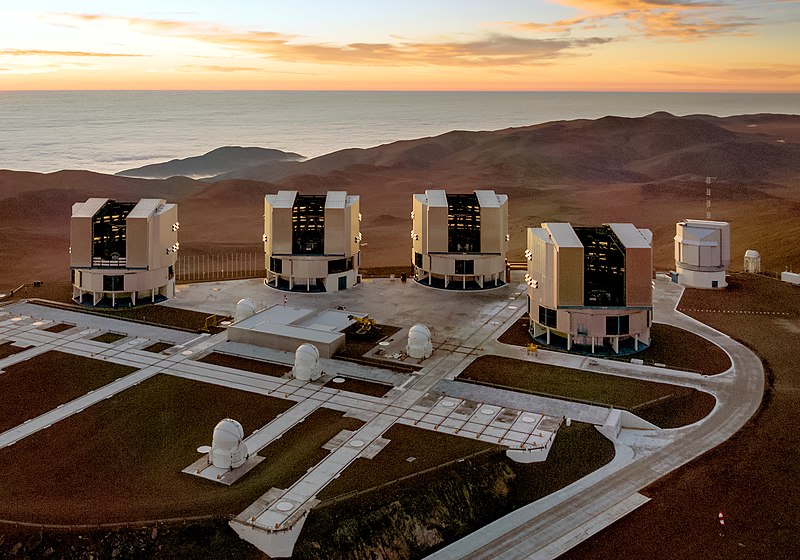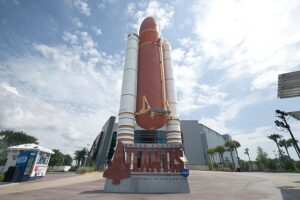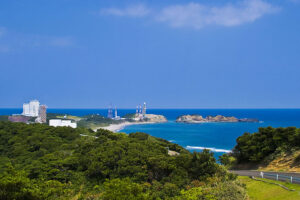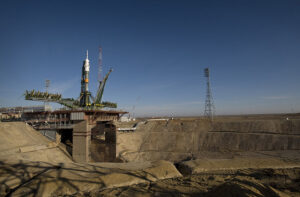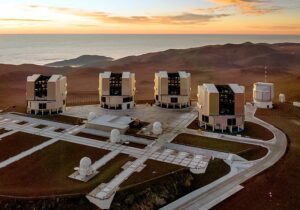The Very Large Telescope (VLT), located in the Atacama Desert of northern Chile, is one of the world’s most advanced and productive astronomical observatories.
Operated by the European Southern Observatory (ESO), the VLT consists of four individual telescopes, each with an 8.2-meter aperture, which can work together to form a giant interferometer, achieving extremely high resolution. The primary objectives of the VLT include studying the formation and evolution of galaxies, the properties of black holes, and the discovery of exoplanets.
The VLT has made significant contributions to our understanding of the universe, including the first direct image of an exoplanet and detailed studies of the supermassive black hole at the center of the Milky Way. The VLT’s location in the Atacama Desert, one of the driest places on Earth, provides optimal observing conditions with minimal light pollution and clear skies.
History and Evolution
The Very Large Telescope project was initiated by the European Southern Observatory (ESO) in the late 1980s, with the goal of creating one of the world’s most powerful optical telescopes. The construction of the VLT began in the early 1990s at the Paranal Observatory, situated in the remote and arid Atacama Desert, chosen for its exceptional atmospheric conditions ideal for astronomical observations.
The first of the VLT’s Unit Telescopes (UTs), named Antu, saw first light in 1998, followed by the other three telescopes, Kueyen, Melipal, and Yepun, which became operational by 2000. Each UT is capable of working independently or in combination with the others using interferometry, which enhances their resolving power. This unique capability allows the VLT to achieve a level of detail that rivals even space-based telescopes.
Over the years, the VLT has been at the forefront of numerous astronomical breakthroughs. In 2004, it captured the first direct image of an exoplanet, a groundbreaking achievement that opened new avenues for studying planetary systems beyond our own. The VLT has also played a crucial role in studying the supermassive black hole at the center of the Milky Way, providing detailed observations of the motion of stars orbiting this enigmatic object, which confirmed the presence of the black hole.
Technological advancements at the VLT include the development of adaptive optics systems, which correct for the distortion caused by the Earth’s atmosphere, and the installation of state-of-the-art instruments such as the Multi Unit Spectroscopic Explorer (MUSE) and the Spectro-Polarimetric High-contrast Exoplanet Research (SPHERE) instrument. These innovations have significantly enhanced the VLT’s observational capabilities, allowing it to conduct cutting-edge research across a wide range of astronomical fields.
The VLT continues to evolve, with ongoing upgrades and new instruments planned to ensure it remains one of the premier astronomical observatories in the world. Its contributions to our understanding of the universe are invaluable, and it remains a key asset in ESO’s efforts to explore the cosmos.
Infrastructure and Facilities
The Very Large Telescope (VLT) complex at Paranal Observatory includes a range of advanced facilities:
- Unit Telescopes (UTs): Four 8.2-meter telescopes (Antu, Kueyen, Melipal, and Yepun) that can operate independently or together using interferometry.
- Auxiliary Telescopes (ATs): Four 1.8-meter telescopes that enhance the interferometric capabilities of the VLT, providing more detailed observations.
- Interferometer: The VLT Interferometer (VLTI) combines the light from the UTs and ATs to achieve extremely high-resolution imaging.
- Adaptive Optics: Systems like NAOS-CONICA (NACO) and the Adaptive Optics Facility (AOF) correct atmospheric distortions, providing clearer images.
- Advanced Instruments: Including MUSE for 3D spectroscopy, SPHERE for direct imaging of exoplanets, and the X-shooter spectrograph for a wide range of wavelengths.
- Control Building: Houses the operational control center, where astronomers and technicians manage the telescopes and instruments.
- Residencia: A living facility for staff and visiting scientists, designed to accommodate the remote location of the observatory.
